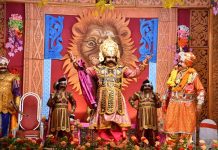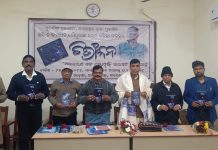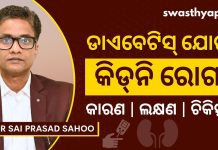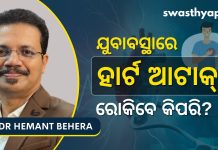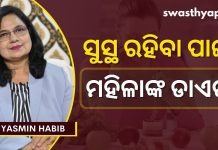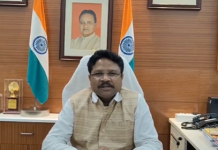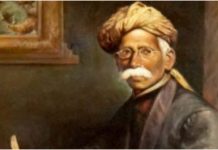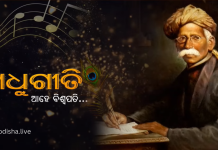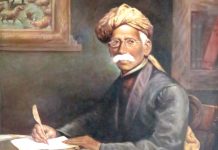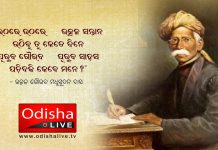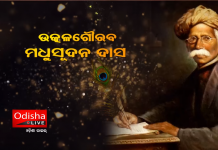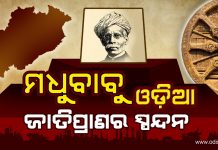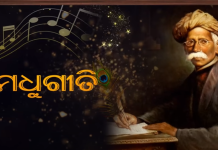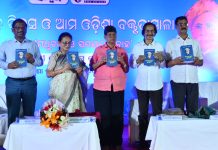Madhubabu,Gopabandhu and Utkal Sammilani
By Sambeet Dash
Pandit Nilakantha Das writes about the immense efforts of Madhusudan Das, an eminent lawyer and patriot and his close friend Gopabandhu Das towards the building of modern Odisha. Popularly known as Madhu babu, he was the more educated and elitist of the duo, used to address the public in a mode equivalent to today’s Power point presentations – sharp and articulate but hardly arousing enthusiasm in general public.
In contrast, Gopabandhu Das was the younger, charismatic one with an epic sense of humor – who could connect better with the commoners with his excellent oratory skills and amazing convincing capability. The duo formed a formidable proposition, propelling their cause towards their common goal of a unique, separate state of Odisha by inculcating the idea into the minds of the masses.
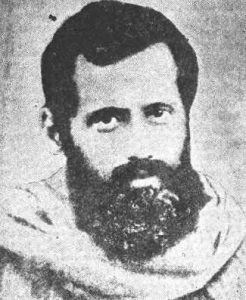
Both fought tooth and nail against the powerful Bengali lobby which was deadly against the formation of an independent Odisha. Dominating the power corridors of the major cities of Cuttack and Puri, a powerful section of Bengali elites proclaimed – ODIA EKTA SWATANTRA BHASA NAYE (Odia is not a language of its own). They instantly pooh-poohed the idea of a separate state, still well ensconced with this vague, ill conceived notion that as a race without distinct language, lacks an identity of their own and hence not entitled for a separate state.
When Madhu Barrister (as Madhusudan Das, a lawyer by profession was addressed as) proposed a new state of Odisha to be carved out of the Greater Bengal at the Congress conference in Murshidabad, the Bengali- dominated top brass vetoed against it. Disgusted, Madhu babu left the Congress and started a front called UTKALA SAMMILANI (Odisha Conference) to promote the goal towards separate statehood. 
Soon the demand for independent Odisha gained traction as more and more prominent intelligentsia from different parts of the proposed State joined the movement. One day, as the leaders of UTKALA SAMMILANI huddled together to plan their next move, they heard a knock on the door. Standing with his characteristic smirk was a well attired man with sharp nose and a prominent moustache. He was no other than Gangadhar Meher, an intellect and towering figure from the north Sambalpur, also known to pen powerful, inspirational poems. The leaders embraced the poet revolutionary, and Gangadhar Meher embraced the cause of separate Statehood.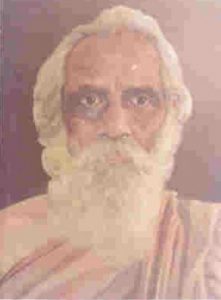
Pandit Nilakantha Das recounts an interesting episode during the peak of the demand for a separate state of Odisha. A huge gathering of UTKAL SAMMILANI (conference) was held at Cuttack. A telegram was sent to Pandit Nilakantha Das, who arrived at the venue with an army of 60 students volunteers from SATYAVADI School needed for crowd control. Trained as strict disciplinarians under a martinet Nilakantha Das, the volunteers religiously enforced discipline, ensuring no one being allowed to enter the podium without a valid Pass.
Suddenly there was a melee at the entrance to the venue. Madhu Babu inquired what’s the commotion was about. The volunteers from Satyavadi won’t let Gangadhar Meher in, as he did not possess a pass. Madhu Babu told them to let Meher in. Still the volunteers won’t relent. Gopabandhu Das, apt at handling situations intervened immediately, sending a volunteer to fetch a pass, handing it to the poet from Sambalpur, apologizing on behalf of them.
Gangadhar Meher stood smiling. Taking no offence, he told Nilakantha – “Don’t worry. Your boys are fine”. I can see, Nilakantha has indoctrinated his students well to enforce discipline. Fast forward to a century – if a student volunteer defies the order of someone of the stature of Madhu Babu, a few Babus (Bureaucrats) would compete to punish the hapless guy (or girl) to impress their VIP bosses.

Eventually the hard- earned state of Odisha – as we see it today extending from the Coromandel Coast of Bay of Bengal to the dense forests of DANDAKARANYA (Eastern Ghats) – saw the lights of the day. The state was formed on 1st of April, 1936. Though many Bengali BHADRALOK (gentlemen) opposed the move, there was hardly any violence against them, nor there any exodus of Bengalis to their native state. Most of them settled down in Odisha mingling with the milieu, especially in Cuttack and Puri, the happening places in Odisha at that time.
On his death bed, Madhusudan Das, realizing his dream of Greater Odisha which included Paralakhemundi (modern day Ganjam) and faraway Koraput, smiled and died a happy man with a sense of accomplishment.
(This is the 5th in series of recapitulation in the writer’s own words portions of Pandit Nilakantha Das’s Biography in Odia.)
Sambeet Dash is an Odia technocrat living in Georgia US.


